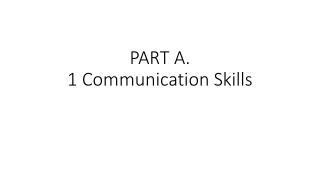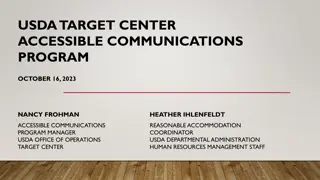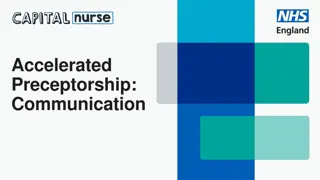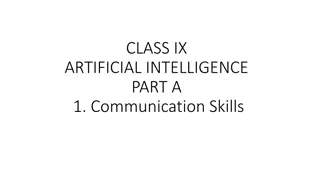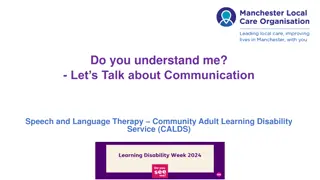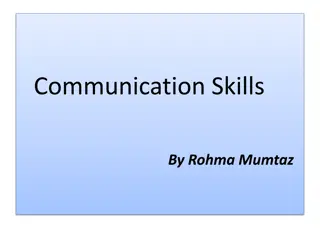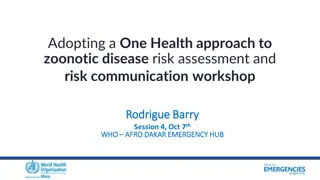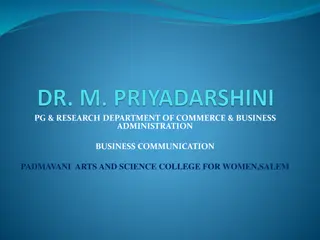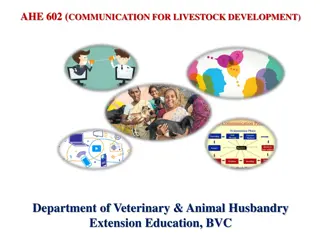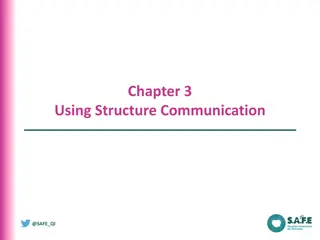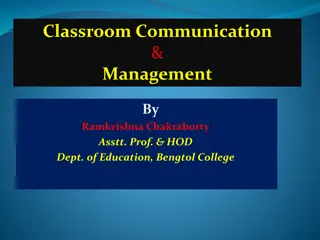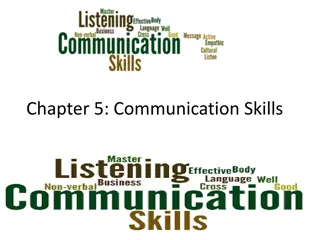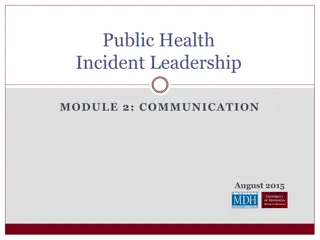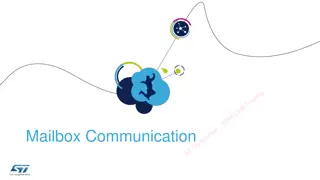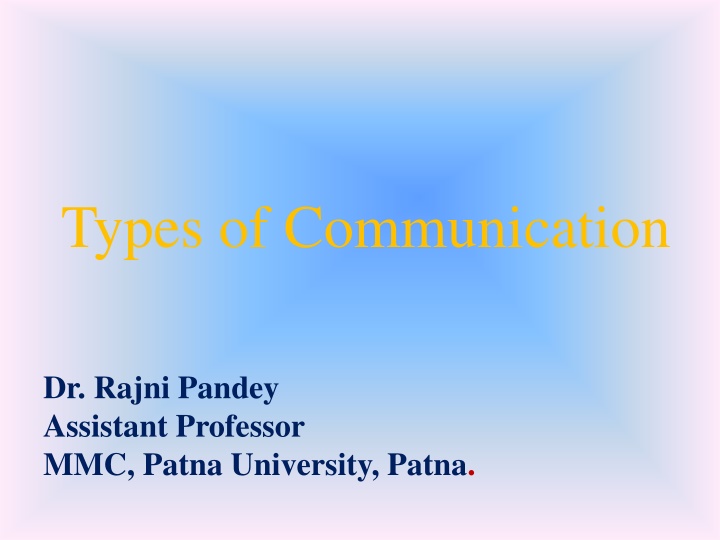
Different Types of Communication Methods
Explore the various forms of communication, from verbal to non-verbal, and learn about one-way versus two-way communication. Discover the importance of feedback in effective communication and differentiate between verbal and non-verbal communication methods. Gain insights into formal communication structures and their significance in organizational settings.
Download Presentation

Please find below an Image/Link to download the presentation.
The content on the website is provided AS IS for your information and personal use only. It may not be sold, licensed, or shared on other websites without obtaining consent from the author. If you encounter any issues during the download, it is possible that the publisher has removed the file from their server.
You are allowed to download the files provided on this website for personal or commercial use, subject to the condition that they are used lawfully. All files are the property of their respective owners.
The content on the website is provided AS IS for your information and personal use only. It may not be sold, licensed, or shared on other websites without obtaining consent from the author.
E N D
Presentation Transcript
Types of Communication Dr. Rajni Pandey Assistant Professor MMC, Patna University, Patna.
COMMUNICATION IS THE PROCESS BY WHICH TWO OR MORE PEOPLE EXCHANGE IDEAS, FACTS, FEELINGS OR IMPRESSIONS IN WAYS THAT EACH GAINS UNDERSTANDING OF THE MEANING, INTENT AND USE OF MESSAGES. A COMMON -LEAGANS
Communication takes many forms according to the style of expression, the occasion and situation, the symbols and the medium used as per the relationship between the persons involved and such other factors.
One way vs Two way communication One way communication is characterized by absence of feedback from the receiver whereas Two way communication involves active feed-back from the receiver to the sender to ensure that the receiver has understood the message in the same sense that sender intends to convey.
VERBAL COMMUNICATION Verbal communication involves the use of symbols that generally have universal meanings for all who are taking part in the process. Types of verbal communication are: Oral Communication Written Communication Oral communication is that channel of communication in which message is transmitted in spoken form. Written Communication is that in which information is exchanged in the written or printed form.
NON-VERBAL COMMUNICATION Non verbal communication means transmission of meaning other than oral or written words. This transmission can be through facial expression, body posture, eye contact etc. Types of non-verbal communication are KINESICS: it is the study of body movements to judge inner state of emotions expressed through different parts of the body. FACIAL EXPRESSIONS GESTURES POSTURES PROXEMICS PARALANGUAGE It involves the study of voice quality, volume, speed rate and the manner of speaking beyond the words. E.g. shaky voice reveals nervousness, clear voice reveals confidence, broken voice reveals lack of preparation etc.
FORMAL COMMUNICATION structured on the basis of hierarchy, authority & accountability. Formal communication is communication Types of Formal Communication Upward Communication: Sending of message from subordinates to superior. Downward Communication It is the flow of information from superior to subordinate in the organisational hierarchy. Horizontal Communication It refers to the horizontal flow of message among colleagues.
INFORMAL COMMUNICATION Informal communication is relatively less structured & spontaneous communication arising out of day to day routine & meetings among people.
INTER-PERSONAL COMMUNICATION Interpersonal communication is communication among two or more persons. It is an important element of the organisation. INTRAPERSONAL COMMUNICATION It is internal dialogue occurring within the mind of an individual. It may be clear or confused depending upon the individual s state of mind.
GROUP COMMUNICATION It takes place in meeting helps in understanding a situation, exploring possibilities and in solving problems because it allows a multiple point of view. It gives the participants an over-view of the organization and the issues discussed and enable them to appreciate other people s point of view. Multiple barriers operate in group communication. The participants have to be committed to group decisions and activity. The size of the group affects its communication. The minimum number is three and the maximum for effective communication is ten, though larger groups of up to fifteen can manage to have effective communication
MASS COMMUNICATION Mass communication is a public communication. It is a one way communication which includes messages disseminated by radio, television, the press and through the internet. It is used for circulating information and instruction to the people, for disseminating information about themselves, for advertising, and for propaganda. It has single source and multiple receivers, the content is open to all, audiences are heterogeneous and it can establish simultaneous contact with every large numbers of people at a distance from the source and widely separated from one another.

